Filter by
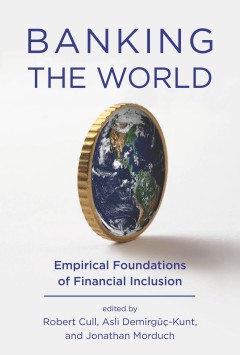
Banking the World: Empirical Foundations of Financial Inclusion
About 2.5 billion adults, just over half the world's adult population, lack bank accounts. If we are to realize the goal of extending banking and other financial services to this vast "unbanked" population, we need to consider not only such product innovations as microfinance and mobile banking but also issues of data accuracy, impact assessment, risk mitigation, technology adaptation, financia…
- Edition
- -
- ISBN/ISSN
- 0262305992
- Collation
- 1 online resource (vi, 511 pages)
- Series Title
- -
- Call Number
- -
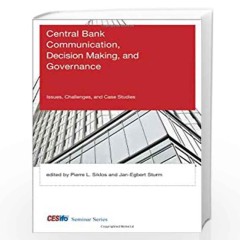
Central Bank Communication, Decision Making, and Governance: Issues, Challeng…
Experts analyze the recent emphasis on central communication as an additional policy and accountability device.In recent years central bankers have placed new emphasis on communication with financial markets and the general public. They have done this not only through the traditional channel of monetary policy pronouncements but also by increasing the quantity of information they make public. Y…
- Edition
- -
- ISBN/ISSN
- 9781461931881
- Collation
- 1 online resource (vi, 318 pages) :illustrations.
- Series Title
- -
- Call Number
- -
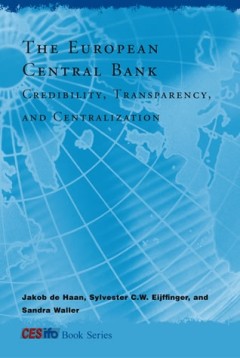
The European Central Bank: Credibility, Transparency, and Centralization
An examination of the debates on European Central Bank monetary policy, focusing on issues of transparency, credibility, and accountability and the effect of the ECB's decentralized structure.The adoption of the euro in 1999 by 11 member states of the European Union created a single currency area second in economic size only to the United States. The euro zone's monetary policy is now set by th…
- Edition
- -
- ISBN/ISSN
- 9780262271400
- Collation
- 1 online resource (264 pages) :illustrations.
- Series Title
- -
- Call Number
- -

https://doi.org/10.7551/mitpress/3000.001.0001?locatt=mode:legacy;http://www.…
Annotation Japan's financial institutions and policy underwent remarkable change in the past decade. The country began the 1990s with a heavily regulated financial system managed by an unchallenged Ministry of Finance and ended the decade with a Big Bang financial market reform, a complete restructuring of its regulatory financial institutions, and an independent central bank. These reforms hav…
- Edition
- -
- ISBN/ISSN
- 9780262269872
- Collation
- 1 online resource (viii, 196 pages) :illustrations
- Series Title
- -
- Call Number
- -

https://doi.org/10.7551/mitpress/3001.001.0001?locatt=mode:legacy;http://www.…
This is the first broad cross-country assessment of the ties between financial structure--the mix of financial instruments, institutions, and markets in a given economy--and economic growth since Raymond Goldsmith's 1969 landmark study. Most studies focus on developed countries and compare bank-based and market-based systems. Debates over the relative merits of the two systems have relied on ca…
- Edition
- -
- ISBN/ISSN
- 9780262271455
- Collation
- 1 online resource (vi, 436 pages) :illustrations
- Series Title
- -
- Call Number
- -
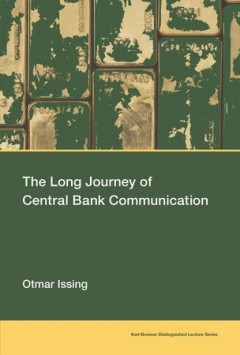
The long journey of central bank communication
Central bank communication has evolved from secretiveness to transparency and accountability—from a reluctance to give out any information at all to the belief in communication as a panacea for effective policy. In this book, Otmar Issing, himself a former central banker, discusses the journey toward transparency in central bank communication. Issing traces the development of transparency, ex…
- Edition
- -
- ISBN/ISSN
- 9780262355995
- Collation
- 1 online resource (104 pages).
- Series Title
- -
- Call Number
- -
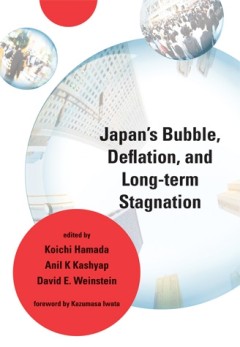
Japan's bubble, deflation, and long-term stagnation
Japan's economic bubble burst in the early 1990s, and the country entered its famous “lost decade”—a period of stagnation and economic disruption that persisted until 2003. The current declines in global equity and real estate markets have eerie parallels to Japan's economic woes of the 1990s. If we are to avoid repeating Japan's experience on a global scale, we must understand what happe…
- Edition
- -
- ISBN/ISSN
- 9780262289467
- Collation
- 1 online resource (xi, 420 pages) :illustrations
- Series Title
- -
- Call Number
- -
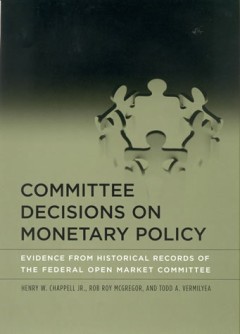
Committee Decisions on Monetary Policy: Evidence from Historical Records of t…
An examination of how the policy preferences of individual members of the Federal Open Market Committee are translated into monetary policy decisions.In many countries, monetary policy decisions are made by committees. In the United States, these decisions are made by the Federal Reserve's Federal Open Market Committee (FOMC), which consists of the seven members of the Board of Governors and th…
- Edition
- -
- ISBN/ISSN
- 9780262270168
- Collation
- 1 online resource (xv, 313 pages) :illustrations
- Series Title
- -
- Call Number
- -
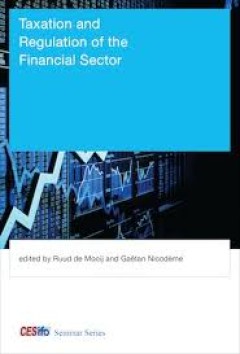
Taxation and Regulation of the Financial Sector
Analytical and empirical perspectives on the interplay of taxation and regulation in the financial sector.OCLC-licensed vendor bibliographic record.
- Edition
- -
- ISBN/ISSN
- 9780262321099
- Collation
- 1 online resource :illustrations.
- Series Title
- -
- Call Number
- -

Feeding The Other :whiteness, privilege, and neoliberal stigma in food pantries
How food pantries stigmatize their clients through a discourse that emphasizes hard work, self help, and economic productivity rather than food justice and equity. The United States has one of the highest rates of hunger and food insecurity in the industrialized world, with poor households, single parents, and communities of color disproportionately affected. Food pantries--run by charitable an…
- Edition
- -
- ISBN/ISSN
- 9780262352789
- Collation
- 1 online resource (312 pages).
- Series Title
- -
- Call Number
- -
 Computer Science, Information & General Works
Computer Science, Information & General Works  Philosophy & Psychology
Philosophy & Psychology  Religion
Religion  Social Sciences
Social Sciences  Language
Language  Pure Science
Pure Science  Applied Sciences
Applied Sciences  Art & Recreation
Art & Recreation  Literature
Literature  History & Geography
History & Geography